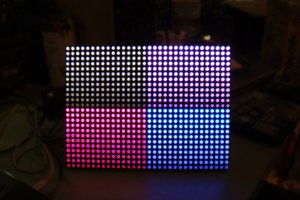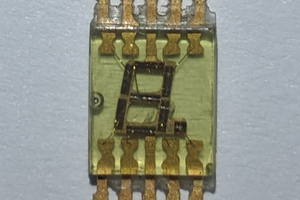The idea for this project began when tablesitting for an organization, realizing that some sort of LED message display would be a great way to get people's attention. LED Matrix-based displays are the norm, but I wanted to do something a bit different. I love the retro look of 16-segment displays, and a bit of searching showed that you can get 1-inch display modules for cheap from the usual Chinese sources.
To drive these displays, the Holtek HTK16K33 was chosen. The display modules happened to be common-cathode, and nearly every other LED driver IC out there assumes common-anode. Plus, the HTK16K33 is super easy to control over I2C, as it has its own memory, with an internal display buffer, and can drive 8 16-segment displays with no external components. The HTK16K33 I2C address is selectable, so up to 8 modules can be connected on a single I2C bus, making it a breeze to daisy-chain multiple modules together. The HTK16K33's I2C bus on each module is buffered with the TI TCA9517DR, allowing 3.3v or 5v logic to be used to control the display. This also greatly improves the reliability of the I2C bus when multiple modules are daisy-chained.
Because a NodeMCU ESP8266 module can be soldered directly to the back of the first module on a daisy-chain, the Segmentron system can operate standalone with no external microcontroller or computer needed. As the ESP8266 is Wi-Fi enabled, the displayed messages can be updated remotely.
 cselzey
cselzey
 Christoph Tack
Christoph Tack
 Ian Hanschen
Ian Hanschen
 Robert
Robert
 Bharbour
Bharbour